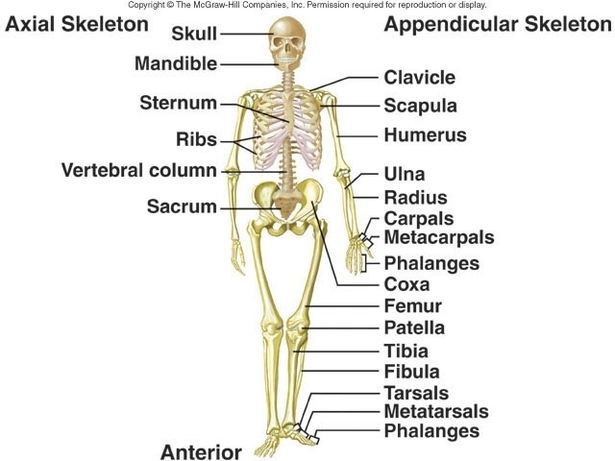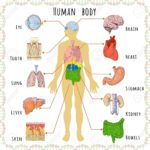The human skeletal system is a complex structure that serves as the framework of the body, providing support, protection, and facilitating movement. It can be broadly divided into two categories: the axial skeleton and the appendicular skeleton.
Axial Skeleton
The axial skeleton forms the central axis of the body and includes all bones of the head, neck, chest, and back. It serves to protect the brain, spinal cord, heart, and lungs. It also serves as the attachment site for muscles that move the head, neck, and back, and for muscles that act across the shoulder and hip joints to move their corresponding limbs.
The axial skeleton of the adult consists of 80 bones, comprising the skull, the vertebral column, and the thoracic cage. The skull is formed by 22 bones. Also associated with the head are an additional seven bones, including the hyoid bone (found in the upper neck) and the ear ossicles (three small bones found in each middle ear). The vertebral column consists of 24 bones, each called a vertebra, plus the fused vertebrae of the sacrum and coccyx. The thoracic cage includes 12 pairs of ribs, and the sternum, the flattened bone of the anterior chest.
Appendicular Skeleton
The appendicular skeleton includes all bones of the upper and lower limbs, plus the bones of the pectoral and pelvic girdles that attach each limb to the axial skeleton. There are 126 bones in the appendicular skeleton of an adult. The lower portion of the appendicular skeleton is specialized for stability during walking or running.
The bones of the appendicular skeleton include those of the appendages and the joints with those appendages including the shoulder girdle (clavicle and scapula) and the hip joint (os coxae or hip bones). These are the bones of the limbs, hands, and feet, the bones of the pectoral (shoulder) girdles, and the coxal (hip) bones of the pelvic girdle.
In conclusion, the axial and appendicular skeletons together form the complete skeletal system, providing the body with structural support, protecting vital organs, facilitating movement, and serving as attachment points for muscles. Understanding the structure and function of these skeletal components is fundamental to the study of human anatomy and physiology..


